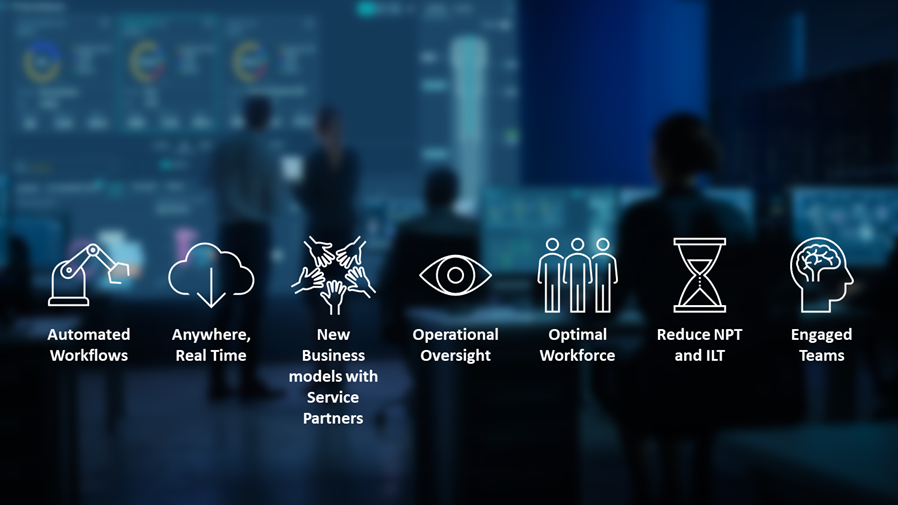Challenges (and rewards) of embracing a Digital Collaboration Platform
In the fast-paced, landscape of the oil and gas industry, digital collaboration platforms have emerged as a game-changer, redefining the essence of...
3 min read
Christoffer Sørensen May 22, 2024 3:10:26 PM

Do you remember the switch from working on documents on a corporately shared folder to using SharePoint? Where you could collaborate with other colleagues in your team on the same document, excel sheet..etc.?
That seemed revolutionary at the time, but, unfortunately Sharepoint is still a silo that can hinder efficiency and consistency.
So why is SharePoint a Silo? Let’s dive in.
This article is written for drilling and well teams constantly looking for the optimal way of doing things, and those who are perhaps already considering what a transition from traditional systems, like SharePoint, to more integrated software platforms, can mean for their day to day.
Curious about IDEX ? Watch this short video presentation
SharePoint, primarily designed for document management and storage, typically functions as a standalone application. In the context of your drilling operations, it often becomes a place that you need to upload and save information, yet this results in segregated data silos.
For example: Each department or project team might use its own SharePoint site to store and manage information in their own way, leading to challenges in data accessibility, quality, and real-time collaboration. The flow and access of information can be impeded, hindering your ability to make timely decisions when they matter most in the dynamic environment that is drilling and wells.
A comprehensive system designed to facilitate the integration of various digital tools and databases into one unified working environment.
Unlike isolated solutions, these platforms support the exchange of information and interoperability between the many different software applications you use in your day-to-day drilling and well operations. In summary, giving you one less thing to worry about, and freeing up some of your all-important time.
The goal is simple; create a cohesive ecosystem that enhances data visibility, improves the efficiency of your processes to support your data-driven decision-making.
For drilling and well operations managers, the shift from traditional systems like SharePoint to integrated software platforms should be seen as a strategic necessity, instead of just a technological upgrade.
This transition addresses several challenges you may face today:
Interesting? Here´s how integrating software platforms can help decrease your NPT:
Automation of workflows: You can automate many routine tasks that were previously done manually. This includes sharing data with external parties, data entry, updates, and transfers between different systems. Minimize the time spent on repetitive tasks and reduce the likelihood of human error, ensuring your operations proceed smoothly and without unnecessary interruptions.
Real-Time data access: Integrated software platforms ensure that real-time data from your operations are readily accessible to all relevant personnel, enabling quicker decision-making.
For instance - If a problem arises such as stuck BHA, the software immediately flags the anomaly and alerts the onshore team. Engineers and managers on duty access the real-time data via the real time dashboard and can quickly analyze the data trends leading up to the alert, confirming the risk of a stuck tool.
Using the software’s decision support tools, the team simulates various response scenarios and decides to attempt cycling free the tool from the tight spot. The software platform facilitates rapid communication and coordination with the onshore and offshore team in the implement the procedural changes.
The corrective action frees the tool within minutes. Continuous monitoring confirms that the weights and other parameters return to normal levels, averting a potential fish. The swift, data-driven response prevents what could have been hours or even days of downtime, not to mention the avoidance of HSE hazards.
Improved coordination: By breaking down data silos and integrating information across different departments, companies, and systems, you can enhance coordination amongst the various teams involved in the operation. You can preemptively identify potential issues, synchronize operational plans with logistics, plan critical path schedules more effectively, and ensure that all parts of your operation are aligned, reducing the delays and confusion that can typically lead to NPT.
Streamlined communication: Integrated platforms often come with communication tools that facilitate easier and faster exchanges between your team members.
This involves synchronizing digital tools and databases used across operations into an accessible, and interactive framework. The process typically includes APIs (Application Programming Interfaces) which are a set protocols that allow different software systems and platforms to communicate and work together efficiently.
Effective integration starts with a clear understanding of your existing IT infrastructure and data workflows. It involves assessing the current systems, mapping out data flows to identify key integration points and performing security measures to protect data integrity and comply with industry regulations.
For drilling operations managers, moving away from siloed systems like SharePoint to integrated software platforms is a proactive approach to tackling modern operational challenges.
You can streamline your data management and workflows whilst at the same time preparing yourself for future technological advancements and efficiency improvements in operations. As the industry continues to evolve, embracing these integrated platforms will be crucial in maintaining both a competitive edge and operational excellence.
Ensure that your teams are equipped to meet today's challenges and capitalize on tomorrow's opportunities!

In the fast-paced, landscape of the oil and gas industry, digital collaboration platforms have emerged as a game-changer, redefining the essence of...

Wondering how to optimize your approach to the huge amount of data and actors in drilling and well operations? Finding too many options and services...

Introduction In today's rapidly evolving oil and gas industry, where efficiency and safety are paramount, harnessing the power of digital solutions...